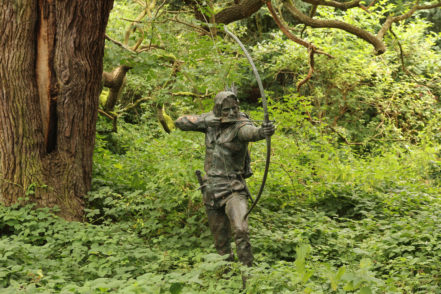
Robin Hood
The story of Yorkshireman Robin Hood, who lived in the 14th century, has been embellished over the centuries until it has taken on mythological status. However, there is some evidence of his existence and the possible basis to the legend.
He is first referred to in literature in 1377 and there are five ballads that date from the 15th century ~ ‘Robin Hood and the Monk’, ‘The Gest of Robyn Hode’, ‘Robin Hood and the Potter’, ‘Robin Hood and Guy of Gisborne’, and ‘The Death of Robin Hood’. From these and other historical records, it is deduced that Robin was trained as a yeoman, hence his archery skills, but became an outlaw either by joining a rebellion against the King, or by failing to join the Battle of Boroughbridge in 1322.
He and his friend Little John, another yeoman, then lived in the woodlands. Two-thirds of the country was covered in forests, and game and timber were plentiful. Robin is associated with Sherwood Forest in Nottinghamshire but he also roamed Barnsdale Forest in his home county of Yorkshire. He ambushed and stole from rich travellers and despised the clergy, whom he tricked whenever possible. He is a people’s hero to this day.
(Image of Robin Hood statue in Sherwood Forest: Richard Croft at geograph.org.uk / CC BY-SA 2.0)
